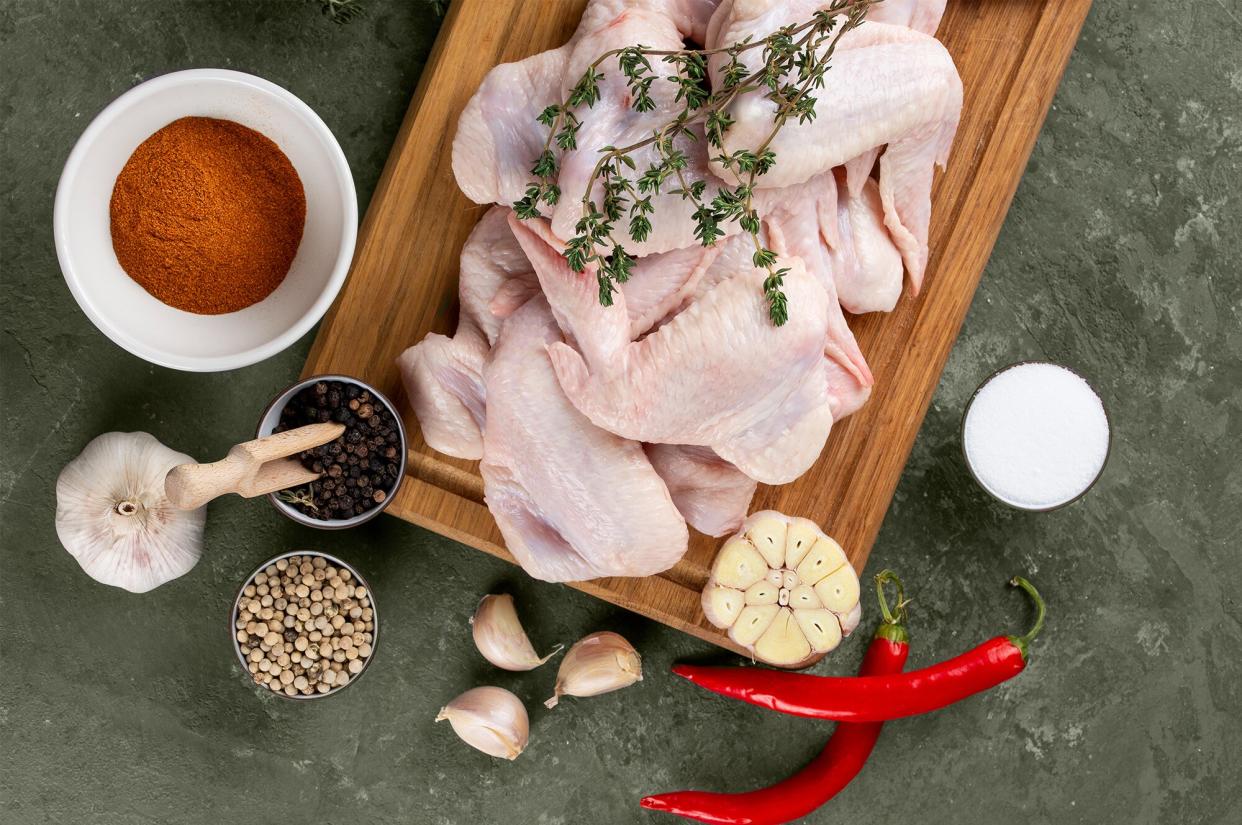You Should Never Defrost Chicken on the Counter—These Are the Only 3 Thawing Methods to Use, Say Food Safety Experts

Aleksandr Kuzmin / Getty Images
TABLE OF CONTENTS
On This Page
Refrigerator Method
Cold Water Method
Microwave Method
Don't Thaw on the Counter
You probably always keep chicken in the freezer so you have it on hand for dinner. But when it's go time, what's the best way to defrost it? Ultimately, there are three methods that experts approve of. When you're short on time, thawing chicken in cold water or in the microwave will ensure you're not eating at midnight. And with a little pre-planning, you can defrost the meat in your refrigerator—which is the most low maintenance, but slowest method. The method you choose will likely be dictated by how much time you have, but all are safe and reliable when you follow our tips.
Related: 3 Ways to Defrost Ground Beef—and Why You Should Never Thaw It on the Counter
Thawing Chicken in the Refrigerator
Food safety experts recommend defrosting chicken in the refrigerator over any other method. This technique allows you to better control the temperature of the chicken and keep it away from the danger zone, which spans between 40 and 140 degrees; bacteria multiply rapidly in this range.
To start, ensure your refrigerator is set to at least 40 degrees. Then move the frozen chicken, still in its packaging, from your freezer into the fridge. Margarethe A. Cooper, Ph.D., associate professor of practice in the School of Animal and Comparative Biomedical Sciences at the University of Arizona, says to place the poultry on the bottom refrigerator shelf on a plate or pan so it can catch any juices that may leak (and prevent them from getting onto other foods in your refrigerator). Once thawed, Cooper says to cook the chicken within one to two days.
How Long It Takes to Thaw in the Refrigerator
This defrosting technique is the same no matter what cut of chicken you're using—think breast, thighs, drumsticks, wings. "What may change is the length of time it takes to completely thaw," says Britanny Saunier, executive director of Partnership for Food Safety Education. "For example, a whole chicken may take longer to thaw than [a package of] smaller cuts." she says. Saunier notes that even small amounts of frozen food—such as a pound of boneless chicken breasts—may require about a day to thaw in the refrigerator.
Thawing Chicken in Cold Water
Although this method doesn't take long, it requires more attention than refrigerator thawing and isn't ideal for every cut. The reason? Water has to stay cold to prevent the protein from reaching that aforementioned danger zone. As a general rule, you shouldn't use this method for chicken that would take longer than two hours to thaw in cold water, such as a whole chicken, says Tracey Brigman, EdD, MS, RDN, LD, a clinical associate professor and associate director for National Center for Home Food Preservation at the University of Georgia.
The chicken should be in an airtight container or placed in a leak proof resealable bag to ensure nothing can get in or out of the packaging. Use a bowl or basin deep enough to completely submerge the chicken, then fill it with cold water (less than 70 degrees). "Change the water every 30 minutes to ensure it stays cold," Brigman says. And once the chicken has thawed, it should be cooked immediately.
How Long It Takes to Thaw in Cold Water
The amount of time it takes your chicken to thaw will depend on how much it weighs, as well as its thickness. A small package of chicken breasts will defrost in an hour or less, while heavier packages will take longer. As stated, you shouldn't use this method for anything that will take longer than two hours to thaw.
Thawing Chicken in the Microwave
Before thawing chicken in the microwave, remove the store packaging, including foam trays and plastic wrap prior. "This type of packaging is not heat resistant at high temperatures," Brigman says. Cooper adds that, if left on, the packaging may expose the chicken to chemicals while you microwave it. "Thus, make sure you transfer it to a microwave-safe cooking dish or container and place a cover on it, loosely placed," she says.
Once the packaging is removed and the chicken is on a microwave-safe dish, use the defrost option on the appliance, which for most standard microwaves is 30% power. "Some microwaves rotate the food which will allow the chicken to defrost more evenly," Cooper says. "However, if your microwave does not have this feature, you should stop halfway through the defrosting process and, using care, rotate the container by hand." This is a necessary step, as Brigman says uneven cooking is a major food safety concern.
Chicken thawed in the microwave should be cooked immediately after it defrosts because some areas of the protein will get warm enough to reach the danger zone, Cooper says.
How Long It Takes to Thaw in the Microwave
Generally, it takes about seven to eight minutes per pound to defrost chicken in the microwave, says Brigman, and the process is the same no matter what cut of chicken you are thawing. She notes that it may take longer depending on the wattage of the microwave and the size and thickness of the meat. "Additionally, it would be difficult to evenly thaw a whole chicken in the microwave, so it's best to [that] in the refrigerator," she says.
Never Thaw Chicken on the Counter
Only defrost chicken using the above three methods—and never leave it to thaw on the counter. "Chicken should never be defrosted on the counter or in warm water," Brigman says. "The outer layer of the food will enter the temperature danger zone—between 40 and 140 degrees—as the inner layer is still thawing, and this is where bacteria multiply rapidly."

